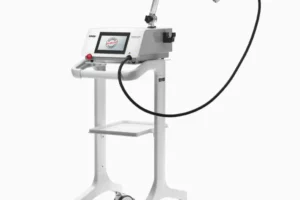The chances are if you’re reading this you’ve had a verruca on your foot or know someone who has had one. And like any reasonable person, when one of these little gremlins pops up on your foot the first point of call is generally to the pharmacy to grab some stuff. What you don’t hear are the horror stories that can happen.
Story 1:
It was a run of the mill day in the clinic that I was working at, which soon livened up. We received an emergency phone call to see a verrucae because he was in excruciating pain, so we squeezed them in. I was thinking this is definitely not a verrucae it has to be something else to cause this amount of pain.
For arguments sake let’s call him call him Mr X, he hobbled in with one shoe on and collapsed in the treatment chair. I was befuddled. Mr X stated that he had been treating the verrucas at home with salicylic acid solution and it wasn’t really working. So I whipped his sock off and he had burnt a hole in his foot with acid 4mm deep. True story and the blasted thing still came back after that ordeal.
Story 2:
Many moons ago in my Uni days I was given a patient, a young bloke similar age to me, he had suffered with persistent verrucas on the bottom of his foot for years and was desperate to fix it because it was causing considerable amounts of pain to the extent it was reducing his ability to increase his physical activity.
He had tried the works with the treatments; the acids, freezing and the caustics. After a careful examination I was happy to inform the bloke that he didn’t have a verruca on the bottom of his foot and that his treatments had worked in regards to solving the problem. But, yes that word we all hate hearing, the treatment he used had created another problem entirely – scar tissue.
Scar tissue doesn’t have the same structure as regular skin, and due to its rigidity, callus forms over it under weight bearing conditions. Unfortunately scar tissue cannot be treated, only managed with mechanical debridement and offloading as it is a lifelong issue.
Story 3
A woman came into the clinic and professed that she had been using at home nitrogen applicators and acids to treat a verruca she had on her little toe. Despite her efforts it wasn’t resolving. After an assessment it became abundantly clear that the lesion wasn’t a verruca but a corn instead. The site in question had become bit of a mess due to all the unnecessary treatment and required a few subsequent consultations to rectify.
I am telling you these stories so that you can proceed with caution when considering treating verrucas on your feet. Incorrect application techniques, even though they seem deceptively easy are the common cause of complications. All it takes is one consultation with a Podiatrist to get an accurate diagnosis and treatment plan to prevent a world of pain.
At Active Step we treat a wide range of foot and lower limb conditions including the treatment of verruca’s. For more information regarding our verruca treatment or to book an appointment click here, or alternatively give us a call on 01489 881 204 or send us an email on info@activestep.co.uk, and we’ll be happy to help.
Written by Astrid Codemo, HCPC Registered Podiatrist, Active Step He



